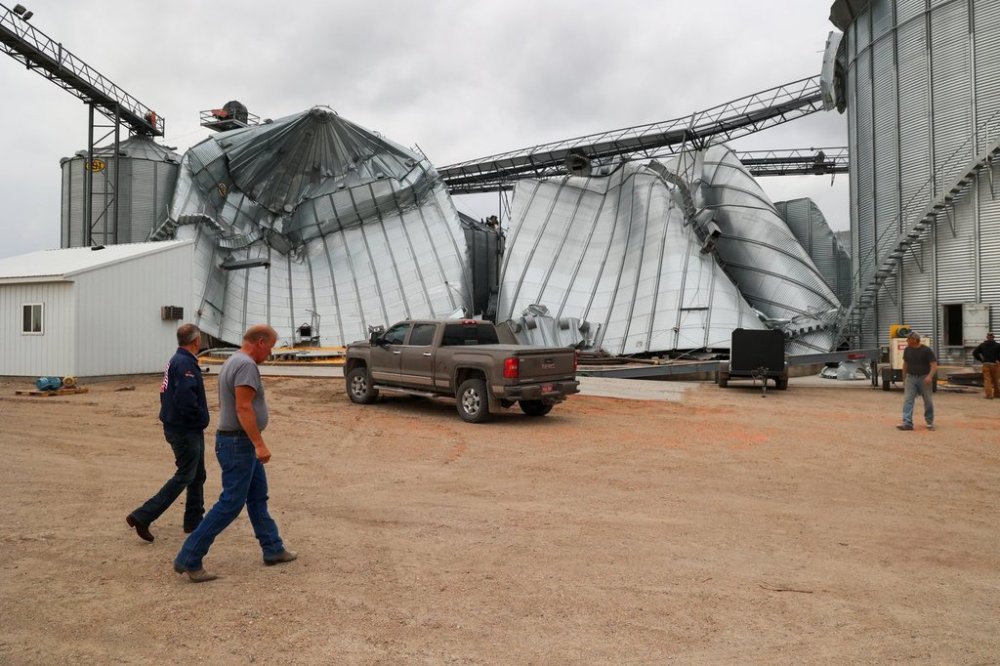EF5 tornado that killed 3 in North Dakota was the nation’s first in 12 years
Advertisement
Read this article for free:
or
Already have an account? Log in here »
We need your support!
Local journalism needs your support!
As we navigate through unprecedented times, our journalists are working harder than ever to bring you the latest local updates to keep you safe and informed.
Now, more than ever, we need your support.
Starting at $15.99 plus taxes every four weeks you can access your Brandon Sun online and full access to all content as it appears on our website.
Subscribe Nowor call circulation directly at (204) 727-0527.
Your pledge helps to ensure we provide the news that matters most to your community!
To continue reading, please subscribe:
Add Brandon Sun access to your Free Press subscription for only an additional
$1 for the first 4 weeks*
*Your next subscription payment will increase by $1.00 and you will be charged $20.00 plus GST for four weeks. After four weeks, your payment will increase to $24.00 plus GST every four weeks.
Read unlimited articles for free today:
or
Already have an account? Log in here »
A deadly tornado that tore across southeastern North Dakota this summer has been upgraded to an EF5 with winds topping 200 mph (322 kph), the strongest classification of tornado and the first confirmed on American soil in a dozen years, meteorologists said Monday.
The June 20 twister near the town of Enderlin killed three people and at its largest was 1.05 miles wide (1.7 kilometers), carving a path across the prairie for just over 12 miles (19 kilometers). Meteorologists from the National Weather Service office in Grand Forks estimated the tornado’s winds reached 210 mph (338 kph), according to the newly released analysis.
The 1999 Bridge Creek-Moore tornado in Oklahoma holds the record of the strongest winds ever recorded in the U.S. at 321 mph (517 kph).

Since the National Weather Service began using Enhanced Fujita scale in 2007, there have been 10 tornadoes categorized as EF5. The 12-year gap between top-of-the-scale ratings is the longest since the agency started keeping records in 1950.
“In the last kind of 12 years, there’s been several strong tornadoes that have come close, but there haven’t been known damage indicators at that time to support the EF5 rating,” said Melinda Beerends, meteorologist in charge at the National Weather Service in Grand Forks.
“It’s hard sometimes to get tornadoes to hit something,” she said.
The morning after the EF5 tornado, meteorologists from the Grand Forks office headed into the field to assess the damage. They studied how the twister had uprooted trees, tipped over fully loaded rail cars, toppled transmission towers and destroyed farmsteads, including one that had its foundation swept clean with just the basement remaining.
“The city of Enderlin, other than losing power, pretty much went unscathed,” said Mayor Deon Maasjo. Two men and a woman were killed at two locations east of the town, which is about 40 miles (65 kilometers) southwest of Fargo.
Determining a tornado’s strength usually takes days or weeks, as meteorologists study the damage to buildings and trees. This case took much longer because of the unusual damage to rail cars, including one that was picked up and hurled far from the rest. The meteorologists worked with engineers and wind damage experts to conduct additional surveys and forensic analysis to determine the EF5 rating, up from the initial estimate of EF3.
The tornado was caused by warm, moist air in a place that’s ripe for a thunderstorm, Beerends said. But there was also a high amount of wind shear, which is a variation of wind speed and direction that created the conditions for the tornado.
In recent years, tornadoes have been occurring with greater frequency east of the Mississippi River, said Victor Gensini, professor of atmospheric sciences at Northern Illinois University.
“If you look 40 to 50 years ago, the tornadoes that were happening in places like Texas, Oklahoma and Kansas are kind of happening there with less frequency, and we’re seeing more tornadoes in places like Birmingham, Little Rock and Memphis,” he said.
Though meteorologists aren’t sure what’s causing the trend, the higher frequency of tornadoes in the Mid-South and Midwest is notable because it’s closer to population centers, Gensini said, so there’s a greater chance a tornado may hit something.
The last recorded EF5 tornado was on May 20, 2013, in a town outside Oklahoma City, killing 24 people and injuring more than 200 others. That tornado tore through hundreds of homes, a school, hospital and bowling alley in Moore, where nearly a decade later, droves of moviegoers lined up to watch the 2024 film “Twisters.”
